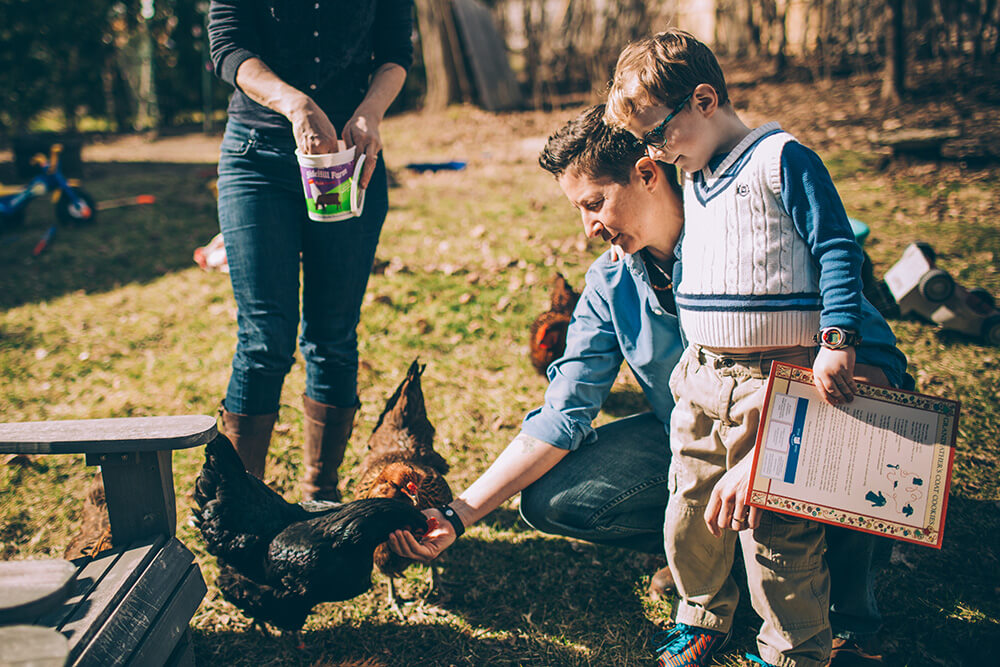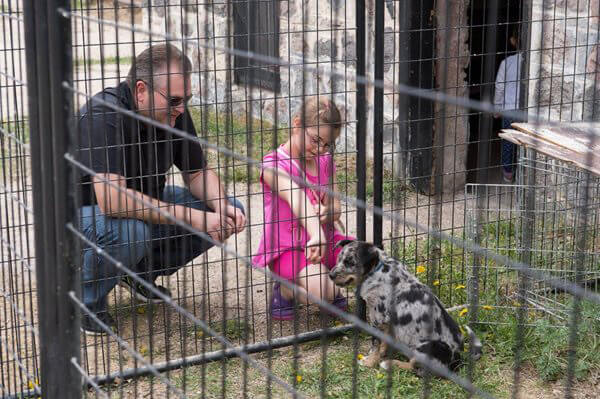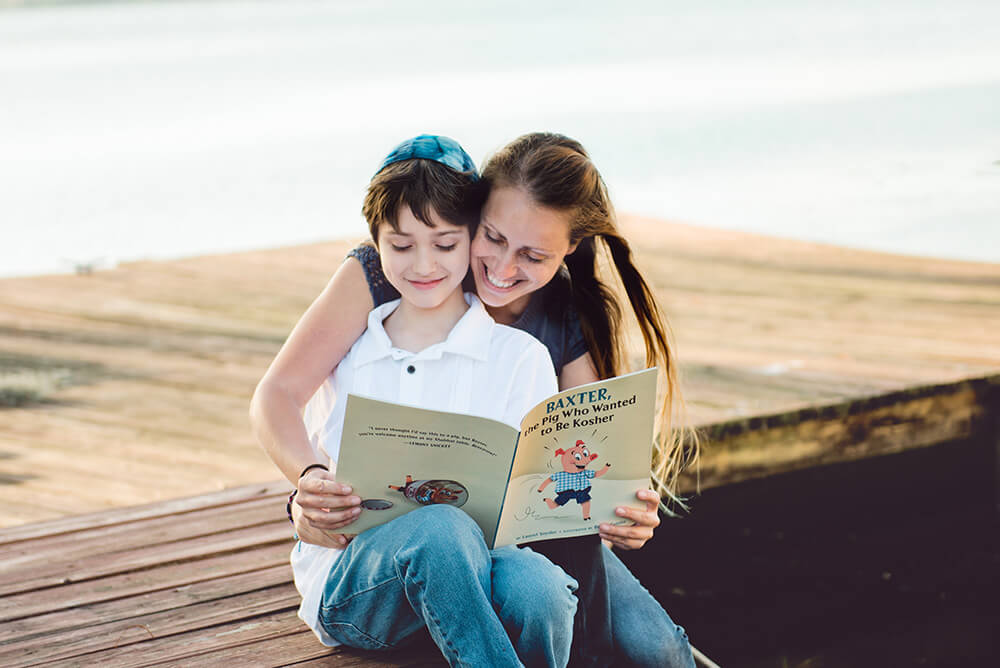One of the easiest ways to teach children about kindness and empathy is to start by helping them learn about treating animals well. In Jewish teaching, compassion, one of the highest virtues, is extended to animals as well as to humans. Tz'ar ba'alei chayim or kindness to animals, is a mitzvah that can easily engage young children and the whole family. The simple activities nurture compassion towards animals while providing opportunities for family fun and togetherness.
Care for pets

Whether you have a dog, cat, iguana, fish, backyard chickens, or all of the above, the bond that children form with a pet establishes a respect for animals early on. Teaching children about being gentle when they handle their pet, and talking to them about their responsibility in caring for the pet, is an easy way to teach kindness to animals. Did you know that caring for a pet at home can help children develop a greater sense of empathy while learning about responsibility? For more information, see this post from Ripple Kindness.
Help the environment

Photo via wikiHow
Little acts to help the environment benefit animals too. When you cut six pack beverage holders up, properly store and sort recycling and trash, you help protect wild and stray animals. Using environmentally friendly soaps and cleaners also helps protect our oceans.
Visit a sanctuary or rescue

Photo via PJ Library in Winnipeg
Take your family to visit an animal sanctuary or volunteer at a shelter. If there are not opportunities for either available, you can also collect donations for your local animal rescue, run or walk a 5k for animals, or sponsor a shelter worker or pet. For a really great volunteering idea, watch the video below - children read to shelter dogs to help the animals get over stress and anxiety. The Mother Nature Network also has a list of 25 creative ways that you can help your local animal rescue.
Plant a butterfly garden

Make your yard or garden friendly to animals by planting a butterfly garden or indigenous varieties of plants friendly to local bees and wildlife. Not only is this activity fun, hands-on, and sensory, but you'll be creating a space for your family to observe and interact with animals right in your own backyard. To help get started with your garden, check out this shopping list of butterfly and hummingbird friendly plants by the New Jersey Audobon Society.
Leave wild animals in their own homes

Children have a natural curiosity about the world around them and the animals that inhabit it. While your child may want to capture hermit crabs at the beach or bring a snail home, the best place for these creatures is in their own natural habitat. At the beach, model this respect by helping stranded starfish make it back to the ocean, and leaving clams and crabs where you find them. During the summer, if children want to capture fireflies in the evening, be sure to set the bugs free after a few moments to ensure they survive.
Use your child’s curiosity as a teaching opportunity to talk about respecting nature. Take the opportunity to practice observational skills and looking with "eyes and not hands."
Read a story or watch a movie about caring for animals

Stories about animal-human relationships or with animals as central characters create natural connections between children and animals. If you do screen time, picking movies or TV shows with animals as the main characters provide great opportunities to discuss kindess with children. If you're looking for a story to read with your children, try Baxter the Pig Who Wanted to be Kosher, Ketzel, the Cat who Composed, A Hen for Izzy Pippik, or How to Heal a Broken Wing.
Do you have a favorite book about animals? Share your favorites with us on Facebook.
August 15, 2016